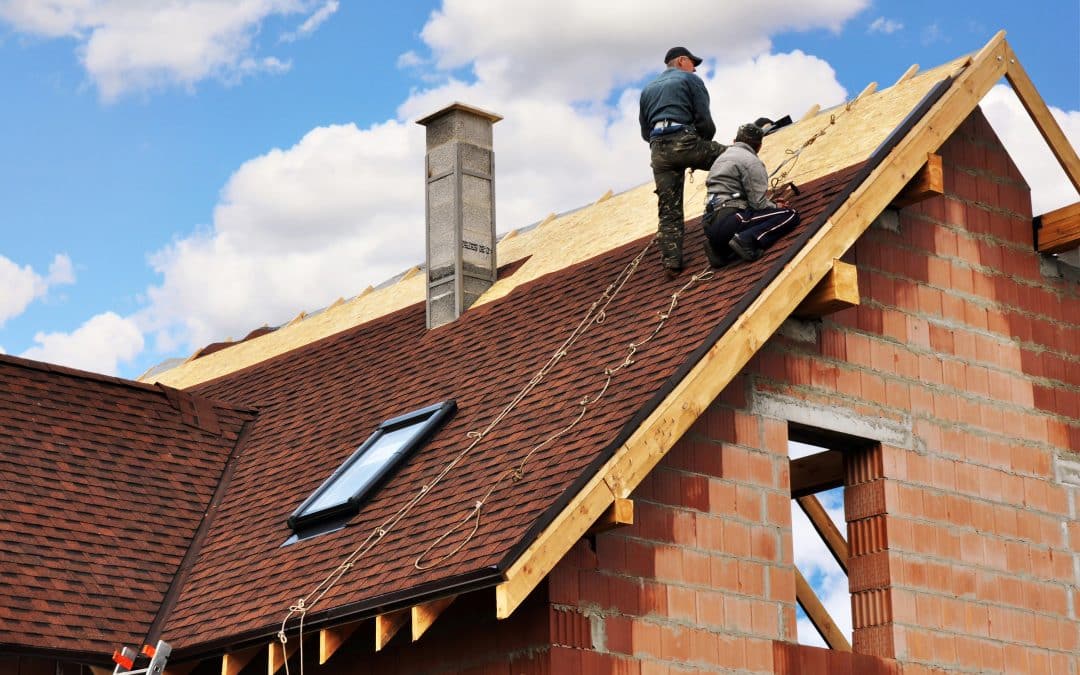When it comes to roofing, one size does not fit all. The climate you live in plays a crucial role in determining the performance and longevity of your roof. It is essential to select a roofing material that can withstand the unique environmental conditions of your area.
In this article, we will explore the importance of selecting the right roofing material for your climate. We will discuss the factors to consider when making this decision and provide an overview of how different roofing materials perform in various environmental conditions. By the end, you will have a clear understanding of which roofing material is best suited for your specific climate.
Understanding Your Climate
Before diving into the specifics of roofing materials, it is important to understand how climate affects their performance. Different climates present different challenges for roofs, such as temperature fluctuations, humidity levels, precipitation patterns, wind speeds, and sunlight exposure. These factors can significantly impact the durability and functionality of your roof.
When considering your climate, take note of the average temperature range throughout the year, the level of humidity, the amount of rainfall, the frequency and intensity of windstorms, and the amount of sunlight your area receives. By understanding these climate factors, you can make an informed decision when selecting a roofing material.
Roofing Materials for Hot and Dry Climates
If you live in a hot and dry climate, it is crucial to choose a roofing material that can withstand high temperatures and prolonged sun exposure. Here are some of the best roofing materials for hot and dry climates:
- Clay or Concrete Tiles: Clay or concrete tiles are excellent choices for hot climates due to their ability to reflect sunlight and resist heat absorption. They provide natural insulation and can withstand high temperatures without deteriorating.
- Metal Roofing: Metal roofs are highly durable and can effectively reflect sunlight, reducing heat transfer into the building. They are also resistant to fire and can withstand strong winds.
- Asphalt Shingles: Asphalt shingles are a popular choice for their affordability and versatility. However, in hot climates, they may be prone to cracking and fading over time.
- Solar Reflective Roofing: Solar reflective roofing materials, such as cool roofs, are designed to reflect sunlight and reduce heat absorption. They can help lower energy costs and maintain a comfortable indoor temperature.
Roofing Materials for Cold and Snowy Climates
In cold and snowy climates, it is essential to choose a roofing material that can withstand freezing temperatures, heavy snowfall, and ice buildup. Here are some of the best roofing materials for cold and snowy climates:
- Asphalt Shingles: Asphalt shingles are commonly used in cold climates due to their affordability and ability to withstand low temperatures. They are also resistant to ice dams when properly installed.
- Metal Roofing: Metal roofs are highly durable and can shed snow easily. They are resistant to ice dams and can withstand extreme cold without cracking or warping.
- Slate Roofing: Slate roofs are known for their beauty and longevity. They are highly resistant to freezing temperatures and can withstand heavy snow loads. However, they are more expensive than other roofing materials.
- Synthetic Roofing Materials: Synthetic roofing materials, such as synthetic slate or rubber shingles, are lightweight and resistant to freeze-thaw cycles. They can mimic the appearance of natural materials while providing enhanced durability.
Roofing Materials for Wet and Humid Climates
In wet and humid climates, it is important to choose a roofing material that can withstand high levels of moisture and resist mold and algae growth. Here are some of the best roofing materials for wet and humid climates:
- Clay or Concrete Tiles: Clay or concrete tiles are highly resistant to moisture and can effectively withstand humid conditions. They are also resistant to mold and algae growth.
- Metal Roofing: Metal roofs are resistant to moisture and can effectively shed water. They are also less prone to mold and algae growth compared to other materials.
- Asphalt Shingles with Algae-Resistant Properties: Some asphalt shingles are manufactured with algae-resistant properties, making them ideal for humid climates. These shingles contain copper or zinc granules that inhibit algae growth.
- Rubber Roofing: Rubber roofing, also known as EPDM roofing, is highly resistant to moisture and can effectively seal out water. It is a popular choice for flat roofs in humid climates.
Roofing Materials for Windy and Storm-Prone Climates
If you live in a windy and storm-prone climate, it is crucial to choose a roofing material that can withstand high winds and impact from debris. Here are some of the best roofing materials for windy and storm-prone climates:
- Metal Roofing: Metal roofs are highly durable and can effectively withstand high winds. They are also resistant to impact from debris, making them an excellent choice for storm-prone areas.
- Asphalt Shingles with High Wind Resistance: Some asphalt shingles are designed to withstand highwinds. They have reinforced tabs and special adhesive seals that prevent them from lifting or tearing off during strong gusts.
- Impact-Resistant Roofing Materials: Impact-resistant roofing materials, such as impact-resistant shingles or metal roofs, are designed to withstand hail and flying debris. They are tested and rated for their resistance to impact.
- Modified Bitumen Roofing: Modified bitumen roofing is a durable and flexible roofing material that can withstand high winds. It is commonly used in commercial buildings but can also be suitable for residential properties in windy areas.
Sustainable and Energy-Efficient Roofing Options
In today’s environmentally conscious world, choosing sustainable and energy-efficient roofing materials is becoming increasingly popular. Here are some options to consider regardless of your climate:
- Green Roofs: Green roofs, also known as living roofs, are covered with vegetation and provide numerous environmental benefits. They can help regulate temperature, reduce storm water runoff, and improve air quality.
- Cool Roofs: Cool roofs are designed to reflect sunlight and absorb less heat than traditional roofs. They can help reduce energy consumption by keeping buildings cooler and reducing the need for air conditioning.
- Photovoltaic (PV) Solar Panels: Installing solar panels on your roof can harness the power of the sun and generate clean electricity. Solar panels can significantly reduce your energy bills and contribute to a greener future.
- Recycled or Reclaimed Materials: Using recycled or reclaimed roofing materials, such as recycled metal or reclaimed wood, is an eco-friendly option. These materials reduce waste and give a second life to existing resources.
Considering Maintenance and Longevity
When choosing a roofing material, it is important to consider the maintenance requirements and longevity of each option in relation to your climate. Some materials may require more frequent inspections, cleanings, or repairs to ensure their optimal performance.
Additionally, different roofing materials have varying lifespans. While some materials may last for decades, others may require replacement sooner. Take into account the durability and expected lifespan of each material to make an informed decision.
Conclusion
Choosing the right roofing material for your climate is crucial for the longevity and functionality of your roof. By considering the specific environmental conditions of your area, you can select a material that can withstand the challenges posed by your climate.
Remember, consulting with roofing professionals is always recommended to get personalized advice tailored to your specific needs. They can assess your climate, evaluate your budget, and recommend the best roofing material for your home or building.
In conclusion, take the time to research and understand the advantages and disadvantages of each roofing material in relation to your climate. By making an informed decision, you can ensure a durable and suitable roofing solution that will protect your property for years to come.

